INDIAN ARMED FORCES CHIEFS ON
OUR RELENTLESS AND FOCUSED PUBLISHING EFFORTS

SP Guide Publications puts forth a well compiled articulation of issues, pursuits and accomplishments of the Indian Army, over the years

I am confident that SP Guide Publications would continue to inform, inspire and influence.

My compliments to SP Guide Publications for informative and credible reportage on contemporary aerospace issues over the past six decades.
- Prime Minister witnesses 'Bharat Shakti' – a Tri-Services Firing and Manoeuvre Exercise in Pokhran, Rajasthan
- Interim Defence Budget 2024-25 — An Analysis
- Union Defence budget 2024
- Prime Minister Modi Commemorates Indian Navy Day in a Grand Ceremony
- Prime Minister Modi Flies in the LCA Tejas
- New Chapter in India-Italy Defence Ties
- Airpower beyond Boundaries
Rafale — Finally a reality!
The Rafale combat jet packs a powerful punch that will be a potent force multiplier for the IAF and a deterrent for the Pakistan Air Force.
 |
By Air Marshal B.K. Pandey (Retd) Former Air Officer Commanding-in-Chief of Training Command, IAF |
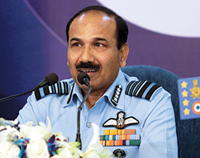
“Any Air force will be proud to have an aircraft such as Rafale. This medium range fighter has exceptional features and capabilities.”
— Air Chief Marshal Arup Raha at a press conference on October 4, 2016, in New Delhi
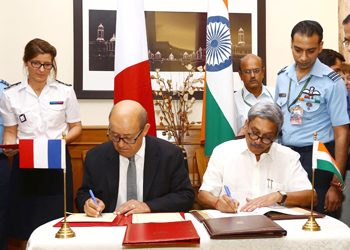
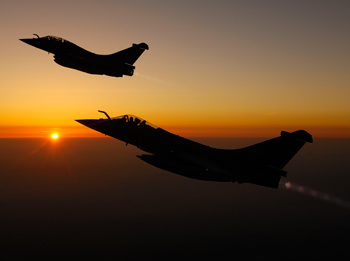
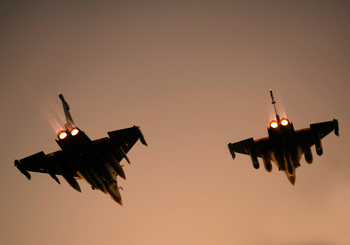
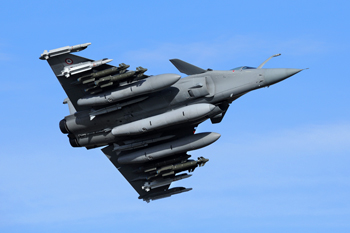
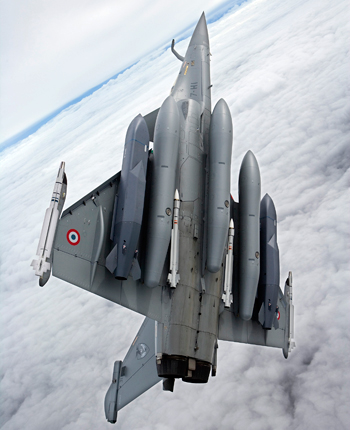
September 23, 2016 was indeed a red letter day for the Indian Air Force (IAF) as it was on this day that the long-awaited contract for 36 Rafale combat aircraft was signed between the Governments of India and France. The Euro 7.8 billion (`59,000 crore) deal was inked at Delhi by Manohar Parrikar, the Indian Minister of Defence, and his counterpart Jean-Yves Le Drian, the Minister of Defence of France who had flown down to India with his delegation specially for this historic occasion.
Delivery of the aircraft is expected to commence in three years and to be completed in 66 months from the date the contract was signed. With the finalisation of this order, India would be the third international customer for this aircraft, the other two being Qatar and Egypt. For the IAF, this is the second major milestone crossed in the year 2016, the first being on June 18 when breaking all traditional barriers, three young women were commissioned as fighter pilots!
The array weapon systems that the Rafale of the IAF will field, will be a game changer for India as neither China nor Pakistan currently possess such capability.
The Rafale is a four-plus generation, twin-engine, canard delta wing, medium multi-role combat aircraft that has a range of over 3,700 km. With its capability to receive fuel in flight, its operational range can be enhanced significantly making the platform capable of undertaking deep strike into both Pakistan and China. The aircraft that can fly at speeds up to Mach 1.8, will come equipped with stateof-the-art weapon systems such as the MICA air-to-air missiles manufactured by MBDA and the Meteor which is an advanced, beyond visual range air-to-air missile (BVRAAM) with a range of 150 km. It will also have the SCALP which is an air-launched cruise missile with a range of over 300 km. The version of the Rafale combat jet the IAF is to receive will have 14 hard points for carriage of bombs and missiles as also drop tanks. Fitted with an active electronic scanning array (AESA) radar manufactured by Thales, that has a target detection range of at least 130 kilometres and it can simultaneously scan and track several targets such as aircraft and incoming missiles fired by enemy aircraft or launched from the ground. The array weapon systems that the Rafale of the IAF will field will be a game changer for India as neither China nor Pakistan currently possess such capability.
Reportedly, it takes just 30 minutes to change the engine on a Rafale while it takes 8 hours to do it on a Sukhoi Su-30
Today, the combat fleet of the IAF is deficient by around 200 aircraft and with the older fleets being overtaken by obsolescence and retired from service progressively, the deficiency could go up to 300 aircraft by the end of this decade if no substantial inductions are made and soon enough. If the induction of Rafale jets is limited to just 36, this contract will only provide partial relief to the distress that the combat fleet of the IAF is in today, and that too only after five-and-a-half years by which time all 36 Rafale jets ordered is scheduled to be operational with the IAF. The immediate excitement notwithstanding, the IAF is unlikely to be in a position to draw much comfort from this contract and in all likelihood will press for more.
After a decade-and-a-half of effort, the Rafale has finally become a reality for the IAF! However, what is noteworthy is that the deal has been clinched at a time when there is a huge spike in the tension on the borders between India and Pakistan. Hopefully, the government will not stop at just 36; but go for at least additional 90 such platforms that ought to be manufactured locally under Prime Minister Narendra Modi’s ‘Make in India’ scheme. However, even with the small numbers inducted, the fleet of 36 of the versatile Rafale combat jet that packs a powerful punch, will definitely serve as a potent force multiplier for the IAF as a whole and of some deterrence value for the Pakistan Air Force.





